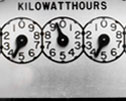A number of years have passed since the Occupational Safety and Health Administration (OSHA) finalized its regulations pertaining to asbestos in the construction workplace. That action was not without conflict; this year marks the 15th anniversary of the settlement agreement reached by OSHA, NRCA and initiating roofing contractors as a result of a lawsuit against the agency claiming the original regulations failed to take into account the unique nature of asbestos-containing roofing materials (ACRM) and roof system removal practices.
Unfortunately, NRCA recently has witnessed an increased number of instances in which government compliance officers, general contractors and roof consultants have misinterpreted or disregarded the well-settled rules and regulations applicable to removal of ACRM.
Major components
OSHA regulations do not apply to asbestos-containing roof coatings, cements or mastics—regardless of the percent of asbestos.
A critical first step in handling regulated types of ACRM is for a competent person to perform a negative exposure assessment (NEA) using industry objective data (compiled by NRCA); air monitoring results from recent, similar asbestos removal projects; or air monitoring results from current job operations.
OSHA does not specify a particular form or content for an NEA—in fact, the regulations do not even call for an NEA to be in written form. However, recordkeeping provisions under OSHA's rules require documentation of objective data relied on for the NEA and any air monitoring results. Core sample analysis of the type, content and location of ACRM likely also would be valuable for inclusion in NEA records on a project.
A competent person who performs an NEA under OSHA's asbestos rules for roof removals must have completed the Environmental Protection Agency's (EPA's) 40-hour Asbestos Hazard Emergency Response Act training or a shorter state-approved program.
For removals where a powered roof cutter is used to cut the field of the roof into squares for easy removal and disposal, EPA rules require the competent person remain on the job site during all hours of roof cutter operation. OSHA requires all workers on an ACRM removal site to complete an eight-hour authorized person training program with a two-hour refresher training session each subsequent year.
Several work practices must be employed during ACRM removal to comply with OSHA rules, such as:
- Removed ACRM always must be carefully lowered to the ground or dropped into an enclosed chute.
- Roof cutter blades must be continually misted with water or amended water unless the competent person deems such action would decrease worker safety.
- The dust from the roof cutter kerf must be collected by a HEPA vacuum or gently swept up on a smooth-surface roof and placed in a bag or covered container.
- Roof-level air intakes must be covered or the ventilation system shut down if possible.
Know the rules
In addition to ensuring compliance with OSHA and EPA, you should be familiar with the state environmental and public health agency rules and county and local government restrictions pertaining to asbestos.
The roofing industry's efforts to help structure OSHA's asbestos rules prove ACRM pose less of a health risk to workers than other forms of asbestos. However, that fact has not prevented government officials from tending to try to apply one broad rule to work involving asbestos without regard to the nature of the material removed or type of work performed.
Harry Dietz is NRCA's director of risk management.



